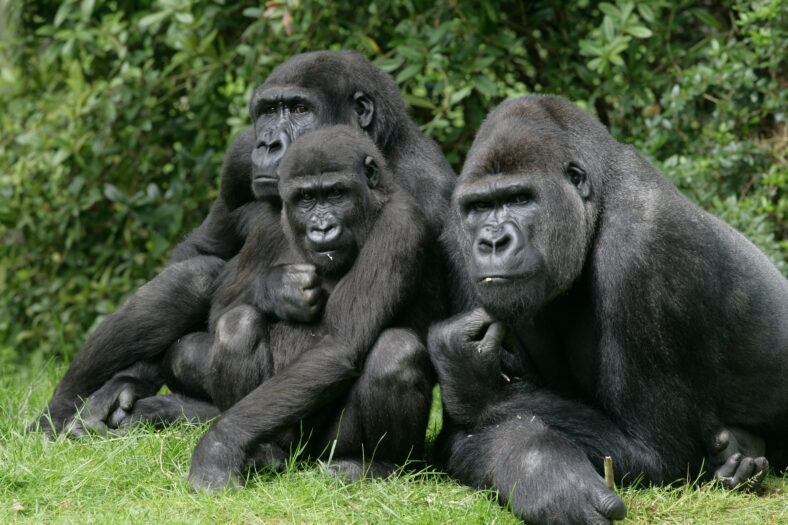These Gorillas Go Searching For Truffles To Eat, Not Bugs

In Congo’s Nouabalé-Ndoki National Park, gorillas are scratching at the soil as a foraging strategy to reach a species of deer truffle, not insects, as scientists long believed.
There are an estimated 180 western lowland gorillas living in Nouabalé-Ndoki National Park in the Republic of Congo in central Africa. They live alongside elephants and chimpanzees.
The park stretches across 1,500 square miles. It was first established in 1993 and is managed by the Congolese government and Wildlife Conservation Society.
Initially, scientists in the park thought that the gorillas were searching for insects to eat when they were scratching the soil.
The team observed four groups of gorillas every day for 10 years. Eventually, they managed to collect specimens of the food that the gorillas were digging up.
The food was identified as Elaphomyces labyrinthinus, a species of deer truffle. The truffle foraging behavior appears to have important social implications for the gorillas.
Not all of the gorilla groups engaged in the behavior, but some individuals seemed to quit doing it or pick it back up again when they migrated from one group to another. This movement provides more insights into their social structure.
Other primate species have helped researchers find new species of truffle as well. For example, in 2020, bonobos in Congo discovered Hysterangium bonobo, a type of fungi that allows trees to absorb nutrients from the soil and supports the diets of other animals.
The new findings were developed by Gaston Abea from the semi-nomadic Indigenous Bangombe people. He was born in Bomassa, the closest village to the park.

Sign up for Chip Chick’s newsletter and get stories like this delivered to your inbox.
He has been working for the park since 2000 and has been one of more than 100 Congolese research assistants trained at Ndoki since 2005.
Abea used his traditional knowledge and tracking skills to record the foraging behavior. He is the first Indigenous person in the park to become the lead author of a scientific paper.
“My people’s traditional knowledge of these forests is endangered by modern lifestyles but is proving invaluable in continuing to study and preserve these ecosystems,” said Abea. “Our ancestors used to hunt gorillas, now we protect them, and I hope to inspire other Ba’Akas to do the same.”
His efforts to locate key areas for gorilla truffle feeding led to the inclusion of the Djéké Triangle in the Nouabalé-Ndoki National Park in 2023, safeguarding more of the primates’ habitat.
“This is an exciting finding for our understanding of gorilla foraging behavior, and we found indications of social implications of soil scratching within groups,” said David Morgan, a conservationist at the Lincoln Park Zoo.
“For example, an adult female emigrated from one gorilla group where this behavior was rare to one where it was nearly a daily occurrence, and modified her habits.”
The research was published in the journal Primates.
More About:Animals